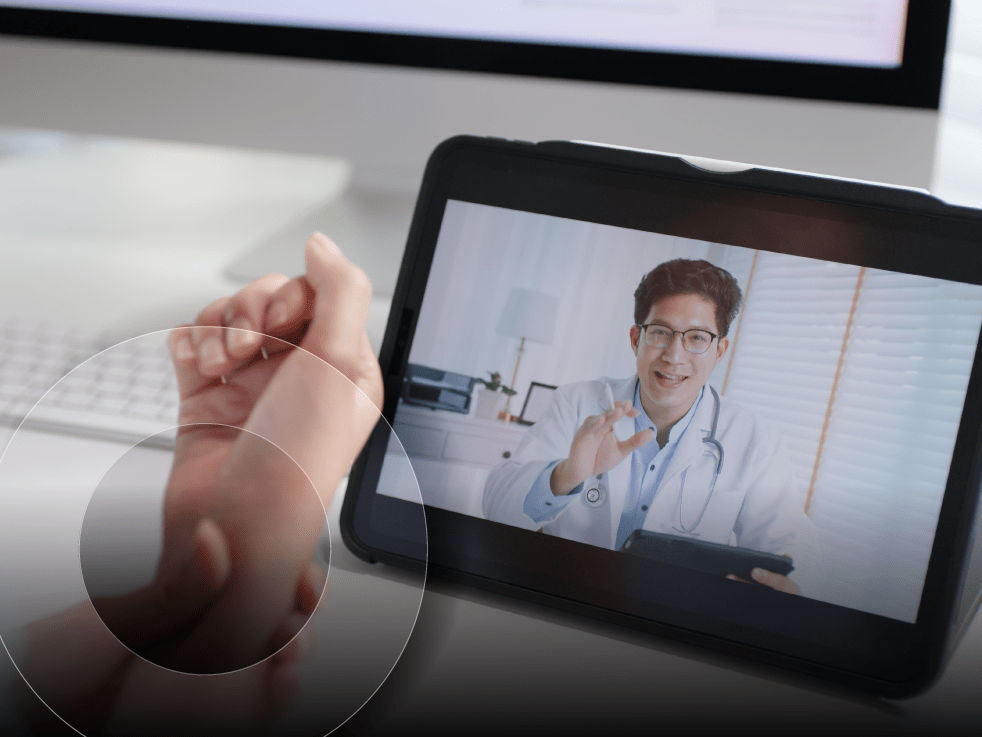Will hybrid working mean a more equal workplace?

Technology as an equalizer (whether through human augmentation or providing more flexibility in the way we work) is something I’ve always been interested in, and passionate about. A chance encounter last week got me thinking about this topic again.
I had to go into Winchester for an appointment, and while I was waiting indulged in the novelty of a takeaway coffee – my first since the latest UK lockdown lifted and it’s been warm enough to sit outside. As I sat in the sun outside the cathedral, I couldn’t help overhearing the conversation on the next bench – two young mothers discussing school choices for their four-year-olds. One of the children had mild mobility issues, speech and language delay, and possibly cognitive issues, and a lot of uncertainty as to how her condition would develop. At the age of four, her mother was already worried about whether her daughter would ever be able to work, and what support she’d need.
I thought about just walking away but decided to stop and chat with the mothers. I’m glad I did, as the topic of tech as an enabler is something I’ve been exploring for some time, and I was able to share some insights and ideas with them.
Yesterday (April 28, 2021), Microsoft published a blog post entitled ‘Doubling down on accessibility: Microsoft’s next steps to expand accessibility in technology, the workforce and workplace’, which coincided nicely with my own thoughts on how the shift to the hybrid workforce will affect workers with disabilities. As Microsoft’s Brad Smith said in the blog post:
People with disabilities represent one of the world’s largest untapped talent pools, but we all need to act with bolder ambition to empower disabled talent to achieve more.
In the last 12 months, everyone who can conceivably do their job from home has been working remotely. Temporary solutions put in place in the early days of the pandemic are beginning to be replaced by true digital transformation as organizations acknowledge the long-term need to allow and empower employees to work in a hybrid state of both on-site and remote.
Many disabled workers have found a silver lining in the pandemic and lockdowns, as they have been able to work from home without feeling excluded or disadvantaged. Normalizing remote work means that they don’t have to make the choice between being the WFH exception or struggling with access to poorly adapted workplaces and systems not designed to meet their needs.
As one person I spoke to recently put it: “Now my commute to work is just across the hallway, I don’t waste energy on non-essential travel. And my working environment is adapted to my needs – everything from the height of the desk to privacy when I need to deal with medical issues.”
For others, being out of the open-plan environment makes it easier for them to use assistive technologies such as speech-to-text.
The workplace is now digital
While we’ve been talking about supporting the ‘hybrid workforce’ for some time now, with the possibility of physical work location varying depending on your needs, the requirements of your role, and your organization’s policy. For many, the workplace itself is now purely digital. You can take it with you – from your home office (or maybe your garden), to the coffee shop, to a local co-working space, to a ‘microsite’, to a customer site or to your main office. The hardware, software, and access to systems need no longer be constrained by physical location.
As the workplace has moved from physical to digital, many disabled workers have felt that the playing field has been, if not leveled, at least made less uneven. In some cases, they even admit that they are finding it easier than their peers, who are struggling to adapt to new ways of working.
Facing up to the challenges
Many people with hearing impairment struggle with video conferencing as sound quality is often poor due to inappropriate equipment or network issues. Lip reading is impossible when more than one person is speaking, and the screen is full of faces rather than spotlighting the speaker. And while vendors have recognized the need for captioning, automatic captioning is often more a source of entertainment or frustration than anything else. Live captioning services or signing services need to be planned and set up in advance of calls.
As Carolina Milanesi, (an industry analyst with 20 years’ experience who focuses on consumer tech, education, and diversity) points out in her blog post from January, where she looks at Cisco’s commitment to inclusion:
As we start thinking about returning to the office, it is paramount that participants joining meetings remotely feel that their voice is as important as the voice of those entering the meeting from the office. A lack of parity of experience will quickly drive people to old habits relegating video conferencing to where it was before the pandemic: a much weaker second choice to in-person collaboration.
Cisco’s planned developments for Webex in 2021 include templates that allow meeting hosts to assign speaking order and mute other participants to avoid interruptions or individuals being overlooked, as well as the use of Artificial Intelligence to interpret body language. And at an internal SHI event earlier this year, Gerri Elliot (Head of Sales & Marketing at Cisco) hinted that Cisco might even build on this interpretation of gestures to provide sign-language translation – removing the need to book interpreters in advance.
Sometimes the solutions are simple. Delivering pre-configured devices to end-users at home, ready to go out of the box, saves them from having to travel to the office (learn more about SHI’s Zero Touch X service here). Providing the appropriate software (speech recognition, screen reading), peripherals (modified keyboards, speaker/microphone rather than headset, larger monitors), and even office equipment (adjustable desks, task lighting) can make a huge difference. Offering a choice of technologies means that you can match the needs of the individual rather than catering to the lowest common denominator.
Microsoft is committing to ‘Accessibility by design’, building features into 365, LinkedIn, and GitHub to make them more accessible.
What more do we need to do as leaders?
If we’re going to employ the best people for the job, we need to learn the lessons of the pandemic.
- Cater to the individual rather than the lowest common denominator and provide the right tech for each individual based on their role and circumstances
- Look at hybrid working based on need – everything on the spectrum of 100% home-based to 100% office-based should be an option built on business and personal requirements
- This means we need to educate our employees on hybrid working etiquette – learning how to work together when people are in multiple locations
- Embrace asynchronous working, providing flexibility of hours as well as location where set hours are not relevant to the role
- Measure outcomes or outputs – not activity. What gets measured gets done, and the wrong metrics can drive the wrong behaviors.
- Provide ‘workplace’ assessments for home offices, and support employees who need help in improving their home working set-up
My discussion on that bench in the sun-drenched churchyard was inspiring. It reminded me of all the technologies we now have access to – and more that are on their way – that empower us to really level the workplace for employees of all abilities. I also hope it reassured the mother of the child.
I know from my many conversations with colleagues at SHI that I’m not alone and that we have some seriously clever people working with the innovative technologies our partner vendors are developing to help our customers transform their approaches to supporting a workforce that’s hybrid in more ways than one.
Why not reach out to your account rep to learn of the many ways we are helping organizations like yours?




